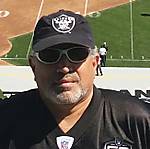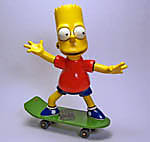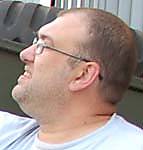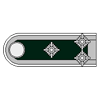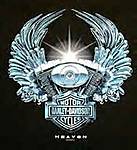Panthoholics,
I’m here again with a rather text filled update.


For the armored exhaust guards I used parts C3(C4), these were molded castings and replaced the welded armor exhaust guards C5(6) on late model Ausf G’s and would have been the most likely armored exhaust guards to be installed on the Ausf F. From what I’ve read the welded armor exhaust guards had replaced the original cast armor exhaust guards and these redesigned cast armor exhaust guards replaced the welded armor exhaust guards. They were textured with the Mr. Surfacer 500 before being cemented in place. The two tow brackets G31(G32) on the engine access hatch were also installed along with both external engine starter support guide pins D8. The external engine starter support guide pins are shown 180° around from where they should be on the kit assembly drawings in step 4 and can easily be installed incorrectly.
A .030” (0.762 mm) diameter styrene hex rod bolt head was added to the oil filler boss at the top portion of the final drive housings (inset photograph).
Using the Archer ‘Resin Casting Marks’ set I’ve gone ahead and added casting numbers to both the final drive housings and cast armored exhaust guards. There are casting numbers where I placed them on the final drive housings on the real vehicles but I haven’t seen any casting numbers displayed on any of my reference books for the redesigned cast armor exhaust guards. I took an artistic license here to included a vendor casting number to these redesigned cast armor exhaust guards as they may have had casting numbers included when produced by at least one of any number of cottage vendors late in the war.
For those of you who haven’t used this product before (this is my fist time) the casting marks are cast in resin over clear decal film and you simply apply them just as you would for water slide decals but are intended to be applied under paint. I first brush applied Future acrylic floor coating to the surfaces of the bare plastic and textured surfaces that would be receiving the casting numbers. After applying the casting numbers I brushed on a thin coating of Walthers ‘Solvaset’ decal setting solution over the resin casting numbers, this is really strong stuff and will get just about any decal film to lay down flat against even the most porous surface without leaving any signs of fish scaling under the decals once set. You can also use a little water to dilute the decal solution for very delicate decal films. It’s also a good idea to test this on a decal that you’re not going to use on the same decal sheet for compatibility. I like the results that I got, so I’m going to be using these cast markings again on another build.

.015” (0.381 mm) thick styrene sheet was used to replicate the four studs welded to the right hull rear for mounting the armor storage box used for stowing the infrared night-vision devices (I left out the threaded holes in the center of these studs as they won’t be seen after installing the armor box). Using the same thickness styrene sheet the bracket, for the 20-ton jack holder, was relocated to the center edge of the hull rear. Both of these modifications are taken directly from the scale drawings in the Panzer Tracts No. 5-3 and 5-4 books.

I thinned down the armor guard (C22) covering the upper hulls roof vent hole to better represent the same part as seen in my reference books and scale drawings. I had already installed the cylindrical guard (C29) to the roof vent hole prior to installing the armor guard and the periscope guard (D17 – seen in the far center of the photograph) in step 7. The later replacement armor casting (D52) for the St.G.44 ball mount (B35) are included in the kit but these parts are not mentioned on the kit assembly instructions in step 6 and are shaded as not for use. I went with the replacement armor casting and added a bit more cast texturing using the Mr. Surfacer 500 as the part already comes with a nice cast texturing of its own (inset photograph). Because I’m going to model this vehicle as being hauled I went ahead and covered the opening on the armor casting with the plug for the ball mount (D10).

Here you can see that I’ve gone and added texturing to the armor rear deck plate (A35), there are two optional armor rear deck plates provided in the kit (A34 & A35) and mentioned in step 8, I chose the later one with half the number of mounting bolts with an almost equal number of closure plugs. I attached both the fuel and coolant filler caps ((C16 & C17) to the rear deck plate along with the lifting hooks (A17). I also used the metalizer texturing on the engine access hatch (D15) and fixed the hatch stop (D11) to the hatch. Before placing both armor caps for the air intake holes (A15) to the engine hatch, I punched a hole into a piece of .010” (0.254 mm) thick styrene sheet using a punch a die set and placed the bottoms of the armor caps into the holes and sanded them even to the thickness of the styrene sheet to lower them as they appeared much to high in comparison to my reference books and drawings. The engine hatch handle (A16) was replaced with a .026” (0.6604 mm) diameter steel wire. The handles (B3) in step 6 for both the driver’s and radio operator’s hatches (B11) were also replaced with .020” (0.508 mm) diameter brass wire. I used the Griffon Model workable hinges and handles folding tool to get the right spacing on the bends to match the kit parts. I think the kit parts are nicely molded and really don’t need replacement but I just like to make these items from brass or steel wire.
Texturing was also added to the crew compartment heater (C21 & D12) found in step 8. The pie-slice support frame (D18) was then fixed to the compartment heater. I had removed the bosses for the pie-slice hold down braces on part D12 prior to the texturing as I wanted to model another casting variation of this part as seen in one of my reference books. I added a set of Grandt Line Products, HO scale, 2 ½” hex nut and bolts to both sections and sides of the crew compartment heater, where indicated on the photograph, as these are missing on the kit parts and are present on the real parts. Texturing was also added to the cooling air exhaust armor guard (A9). The kit provides you with two different cooling air exhaust armor guards (A9 & A10) but no mention is made in the kit assembly instructions in step 9 as to which one is the earlier or later casting. I chose the later one as this piece represents the final casting. To the above-mentioned parts I added Archer vendor casting marks.
I thought that the kits 2 m antenna armor base plate (D14) in step 9 was to thick and bolt detail to soft so I fabricated the armor base plate form .015” (0.381 mm) thick styrene sheet and added the three bolts from .030” (0.762 mm) diameter styrene hex rod (circled in red next to the kit part in the photograph). Also circled in red in the photograph is the fabricated tow bracket pin and handle next to the kit supplied pin (D7) from step 4, again I just wanted to model another vendor made variation of this part. The pin is made from .080” (2.032 mm) diameter styrene rod turned down to .070” (1.778 mm) to match the kits pin and the handle is made from 026” (0.6604 mm) diameter steel wire. I opened up the top portion of the air intake armor deflector (C2) in step 8 as this area is molded with part of the screen opening blocked by plastic.
I brush painted the cooling air intake armor guards (A8) in step 9 along with the inside areas of the crew compartment heater, cooling air exhaust armor guard, air intake armor deflector and screen plate for the air intake armor deflector on the rear deck plate with a mixture of Testors flat red and military brown to represent the red oxide primer color used on German AFV’s.

After masking with Tamiya masking tape to keep the paint off of the surrounding areas the cooling air intake channels were also brush painted with the same red oxide primer color mixture and the high performance air exhaust fans were painted with Model Masters flat aluminum and the radiator faces with aircraft interior black. I did not do any weathering or shading of these parts, as they would be very hard to see after adding all the other kit parts above them.

The kits assembly instructions don’t show you how to orientate the cooling air intake armor guards and they can easily be fitted incorrectly on the model. The partial solid casting on one end of the air intake armor guard opening is to help keep the flow of air over just the air intake channels leading to the radiators. You could easily see this in the upper inset photograph.
Using a drill in a hand vise I opened up the armor base for the 2 m antenna for fitting a brass replacement part later in the build. I also partially cut a half radius of plastic away from where the air intake armor deflector screen will reside on the rear deck (lower inset photograph) with a grinder chucked to my Dremel rotary tool as this blocked part of the opening beneath where the screen would be and you could see the plastic.

On my previous posting I had made mention that I would take you through my painting process for the 7 periscopes on the commander’s cupola but I had forgotten about the Driver’s periscope so now that the opportunity has presented itself we’ll take a look at that.
1) I first brush on a coating of Tamiya clear green but only to the top portion of the periscope that you will be able to see once the periscope is installed on the model. For these late model periscopes the armor glass had a slight greenish tint enhanced further by the green interior lighting. I painted the hulls periscopes greener because of they are hiding behind a rain shade and periscope guard. I won’t be so generous with the green when painting the cupolas periscopes. I only painted the rear portion of the periscope and not directly on the front lens opening itself.
2) After letting the acrylic dry for about a half hour I applied a piece of Bare Metal chrome foil over the painted area and with a fresh X-acto blade I trimmed the excess foil off.
3) Here you can see the clear green against the chrome foil backing shining through from the back of the periscope through the front lens opening.
4) I then carefully paint the top portion of the periscope body with Model Masters acrylic Aircraft Interior Black leaving the lens opening alone. You could see the strong reflectiveness that passes through the lens opening with just the slightest amount of lighting on the installed periscope in the background of the photograph.
Next up is the brass photo-etch parts parade!
~ Eddy















